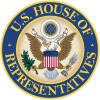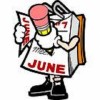PATENT REFORM–THE REMIX
 Scott McKeown, Partner at Oblon Spivak and Practice Center Contributor, sent in this article updating us on the status of H.R. 1249 aka “The America Invents Act” aka “Leahy-Smith America Invents Act”.
Scott McKeown, Partner at Oblon Spivak and Practice Center Contributor, sent in this article updating us on the status of H.R. 1249 aka “The America Invents Act” aka “Leahy-Smith America Invents Act”.
Significant Amendments Targeted for H.R. 1249
Hold up, wait a minute.
The America Invents Act has been seemingly remixed and re-released as the “Leahy-Smith America Invents Act.” All Republicans, throw your hands up, all Democrats, throw your hands up…
With the House now moving to floor debate of H.R. 1249, amendment proposals have come flying from all directions. Not surprisingly, some of the proposals aim to strike PTO fee setting authority, the end of fee diversion, as well as the first to file provision. Should these amendments be adopted, the bill would be killed. Another amendment, introduced by John Conyers (D-MI) seeks to strike everything but PTO funding (including the Detroit Office!). (more…)
Microsoft v. i4i – Awaiting a Burdensome Decision by the Supreme Court
 In the Microsoft Corp. v. i4i, the Supreme Court must determine whether the burden of proof for parties alleging patent invalidity should be changed from a clear and convincing standard to a preponderance of the evidence standard. Oral arguments took place on April 18, 2011 and the Court’s decision is expected by the end of June 2011. While we wait for this potentially precedential opinion, Garth M. Dahlen, Ph.D., Partner at Birch, Stewart, Kolasch & Birch, LLP, brings us up to speed with a comprehensive discussion on the history of the case, the oral arguments and possible outcomes.
In the Microsoft Corp. v. i4i, the Supreme Court must determine whether the burden of proof for parties alleging patent invalidity should be changed from a clear and convincing standard to a preponderance of the evidence standard. Oral arguments took place on April 18, 2011 and the Court’s decision is expected by the end of June 2011. While we wait for this potentially precedential opinion, Garth M. Dahlen, Ph.D., Partner at Birch, Stewart, Kolasch & Birch, LLP, brings us up to speed with a comprehensive discussion on the history of the case, the oral arguments and possible outcomes.
In the pending case of Microsoft v. i4i, the Supreme Court must decide whether the Federal Circuit’s requirement of clear and convincing evidence is proper for an invalidity defense, even though the prior art relied upon by the Defendant was not considered by the Patent and Trademark Office (PTO).
The oral arguments were heard April 18, 2011. Prior to the oral arguments, the smart money was on Microsoft , but based on comments by the Justices during oral arguments, it is not clear that Microsoft has an advantage going forward. (more…)
05.17.11 | patent infringement, posts, Supreme Court Cases | Stefanie Levine
Join Us For Prior Art & Obviousness 2011 June 6, 2011
 Prior art, 35 USC 102, continues to be a complicated concept for patent practitioners and their clients, undergoing evolving interpretations in the PTO and CAFC and even statutory reform. For every practitioner, it is a necessity to stay current on this touchstone of patentability. How does the concept of “prior art” and circumstance collide in the 21st century? How does prior art on the web impact the practice? What is here today, could be gone tomorrow, but can possibly be recovered mean in terms of prior art. And, in the age of biotech and nanotech, what is truly enabled? Is it a catalog listing, or even a peer review paper? Join us for PLI’s Prior Art & Obviousness 2011 on June 6, 2011 in New York or on July 25, 2001 in San Francisco (also available via live webcast) where you will obtain an essential working understanding of this complicated statute, including recent re-interpretations, case law, and a look at enacted or proposed statutory revisions. And let’s not overlook the most common reason any application is rejected or patent held invalid: 35 USC 103, Obviousness. KSR (already 4 years old) will be explored from inside and outside the PTO as both the CAFC and PTO try to shoehorn their past decisions into a KSRpigeon hole!
Prior art, 35 USC 102, continues to be a complicated concept for patent practitioners and their clients, undergoing evolving interpretations in the PTO and CAFC and even statutory reform. For every practitioner, it is a necessity to stay current on this touchstone of patentability. How does the concept of “prior art” and circumstance collide in the 21st century? How does prior art on the web impact the practice? What is here today, could be gone tomorrow, but can possibly be recovered mean in terms of prior art. And, in the age of biotech and nanotech, what is truly enabled? Is it a catalog listing, or even a peer review paper? Join us for PLI’s Prior Art & Obviousness 2011 on June 6, 2011 in New York or on July 25, 2001 in San Francisco (also available via live webcast) where you will obtain an essential working understanding of this complicated statute, including recent re-interpretations, case law, and a look at enacted or proposed statutory revisions. And let’s not overlook the most common reason any application is rejected or patent held invalid: 35 USC 103, Obviousness. KSR (already 4 years old) will be explored from inside and outside the PTO as both the CAFC and PTO try to shoehorn their past decisions into a KSRpigeon hole!
Click here for more information on Prior Art & Obviousness 2011: Current Trends in Sections 102 & 103.
We will have highlights here on the Practice Center so tune in if you can’t make the program!!
05.5.11 | PLI Patent Programs, prior art | Stefanie Levine
Deciding Whether To Stay A Case Pending Reexamination
Scott Daniels, Partner at Westerman, Hattori, Daniel & Adrian and Practice Center Contributor, sent in this article discussing the standard applied by trial judges when determining whether to stay a patent infringement case pending reexamination. According to the article, rather than applying the “universally accepted standard” of clear and objective, the standard is commonly applied in an extremely subjective manner. Daniels examines whether the problem is with the trial judges or with the standard itself.
The universally accepted standard for a court to determine whether to stay a patent infringement case pending completion of a reexamination proceeding is clear and seemingly objective. A court is to apply its discretion in light of the following factors:
(1) whether discovery is complete and a trial date is set, i.e., is the case in its early stages;
(2) whether reexamination would likely simplify, or perhaps eliminate, issues from the litigation; and
(3) whether a stay would unduly prejudice the patentee, or whether the stay is requested by the accused infringer for some tactical reason.
Yet the standard is commonly applied in an extremely subjective manner, so that a number of practitioners have commented that the identity of the judge is the best predictor of the outcome of a stay motion. (more…)
03.8.11 | posts, Reexamination | Stefanie Levine
PTO Director Initiates Reexamination against Gift Tax Patent in Week of January 10, 2011
Here is this week’s installment of Reexamination Requests from Scott Daniels, of Reexamination Alert and Practice Center Contributor….
In a very unusual step, the Director of the PTO has initiated a reexamination of U.S. Patent No. 6,567,790 claiming a method of estate planning (ex parte Request No. (17)). In its reexamination order, the PTO explained that Director initiates reexamination when it appears “that an examining procedure has not been followed which has resulted in the issuance of a claim in a patent that is prima facie unpatentable, and there is a compelling reason to order reexamination at the Director’s initiative.”
In this instance, the original examiner’s failure to consider a specific article “has created an extraordinary situation” requiring reexamination. According to the reexamination order, the article was not considered or discussed in the original prosecution, even though it disclosed the claimed feature noted by the original examiner as the reason for allowance. Whether such methods related to legal and tax matters should be eligible for patent protection has been hotly disputed. (See also IPWatchdog’s post “Patent Office Orders Reexamination of Tax Related Patent” for more on this reexamination story). (more…)
01.20.11 | posts, Reexamination Requests | Stefanie Levine


No Comments
06.17.11 | Patent Reform | Stefanie Levine